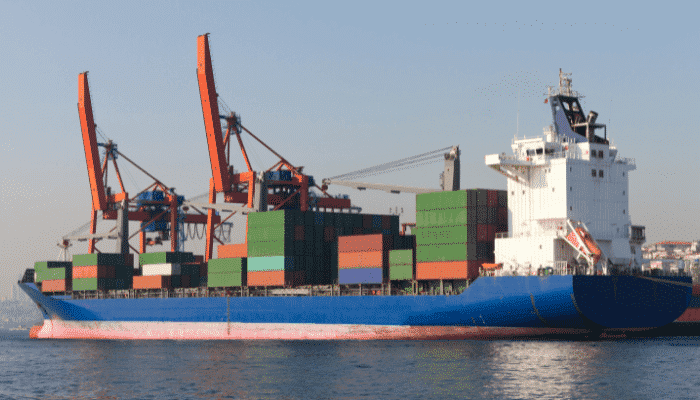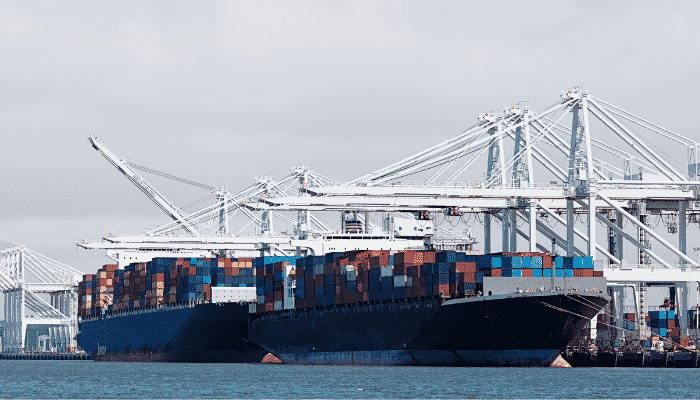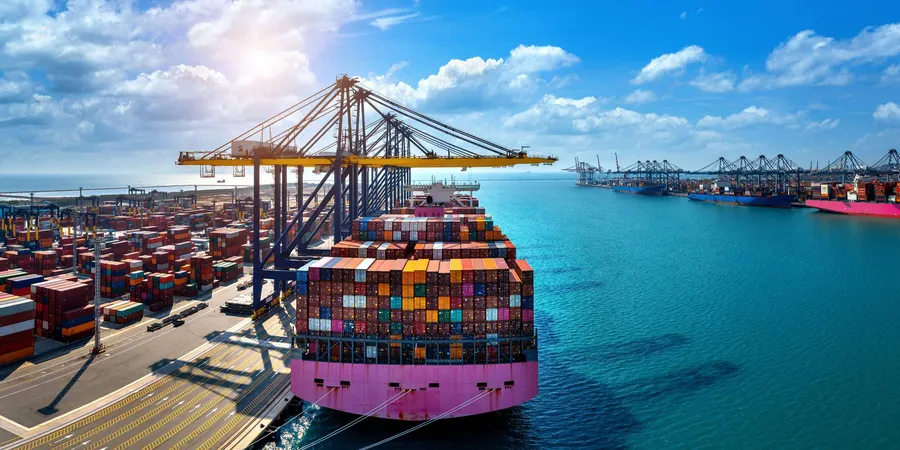What are Container Carrier Alliances?
Over the last year, there has been a lot of focus on Container Carriers and Alliances.
Whilst Alliances have been a feature of the Container Shipping industry for over two decades now, the current overheated freight rate scenario and congestion woes afflicting ports globally have put the spotlight firmly on Carrier Alliances, with the US Government even issuing an executive order in July 2021, looking askance at the dominance of container carrier alliances and associated concerns with rising freight rates.
In this article, we will understand what Alliances are, the background and importance thereof, evolution since the 2000s and the current Alliance structure.
What are Container Alliances?
Container Carrier Alliances are in essence groupings of Container Carriers, where Alliance members co-operate with each other operationally and provide joint services on the bigger routes.
While Container Carriers have historically collaborated with each other through VSA and Slot Agreements, Alliances represent a deeper and more structured relationship.
Members of an Alliance operate services jointly, on a fixed weekly schedule, usually covering all the bigger trade lanes.
Members pool their resources and commit to a certain pre-decided number of vessels on each service, aggregating a pre-determined amount of capacity.
It is to be noted that this collaboration is restricted to the operational aspects only and that each member conducts sales and marketing activities independently.
This means that each Carrier is free to pursue its own commercial strategy and implement pricing policies as warranted by factors such as market conditions, demand-supply equation and organizational objectives.
Alliances are accorded statutory protection from anti-competitive regulations, through the form of Block Exemption Orders issued by the various Governments within whose jurisdictions their services will operate.
This protection extends only to the provision of joint services, and expressly prohibits any collusion on prices (either through jointly determining freight rates or fixing the quantum of surcharges or resorting to tactics such as price-signalling).
Further, to protect the interests of shippers and end-customers, as well as to prevent the creation of a monopolistic market, these exemption orders are subject to stipulations regarding thresholds for maximum permissible market shares held by these Alliances.
An instance was seen in 2014 when the Chinese government disallowed the formation of the P3 Alliance – a proposed alliance between Maersk Line, MSC and CMA-CGM (which were then the 3 biggest container carriers globally, wherefore it was apparent that the combined strength of the proposed alliance would have far surpassed the resources and market shares of competitors, thereby raising justified fears of a distorted playing field).
It was in this context that China’s Ministry of Commerce refused to approve the alliance, on the grounds that its combined market share on certain trade lanes exceeded the prescribed limit.
Rationale and Benefits
Container shipping is an extremely capital-intensive industry, requiring massive investments in assets such as vessels, containers, IT and ancillary infrastructure, offices at Origin and Destination ports etc.
The high upfront establishment costs act as a barrier to entry, which means that as long as demand remains at healthy levels, most carriers can earn a reasonable rate of return.
However, since the recession in 2009, growth in demand has been incommensurate with the growth in supply.
This has created a fiercely competitive market, where container carriers are resorting to aggressive tactics and embarking upon price wars in an effort to grab market shares.
The situation is compounded by the up-sizing of vessels, which has caused an exponential increase in the supply of capacity, with more and more carriers opting to order bigger vessels.
Where the largest vessels in 2010 had a nominal carrying capacity of circa 13,000 TEUs, the largest vessels plying the seas today can accommodate 23,000 TEUs.
These mega-vessels are gaining in popularity as Carriers expect to reap economies of scale (fixed costs spread over a larger number of containers), reducing per-unit costs and increasing revenue per voyage.
With a price tag of USD 150-170 million each, these behemoths put a large strain on Carrier’s balance sheet.
If Carriers are subsequently unable to ensure high utilisation rates and fill up the vessels on each voyage, the business case based on economies of scale falls flat, rendering the investment sub-optimal.
Additionally, if each Carrier were to order their own vessels, to serve each port pair combination on each trade lane, it will inevitably lead to a glut in capacity, rendering most services unviable due to lack of sufficient cargo.
Besides, Carriers will, in this scenario, be constrained to offer services connecting only a few main ports, leaving other ports/ regions underserviced and shippers deprived of lack of choice or sufficient alternative routings.
Carriers, therefore, find it expedient to form alliances and offer joint services, which reduces their own CAPEX and operating expenses, facilitates the coverage of a greater number of ports and countries, besides lowering costs for shippers; all of which ultimately reduce the overall TCO (Total Cost of Ownership) and benefit the end customer.
Other benefits for global trade and the EXIM community include a higher number of reliable services, assured capacity on critical trade lanes and a stable supply chain.
Container Alliances: Evolution and current situation
The container shipping industry is dominated by a few large players (Maersk Line and MSC, followed by COCSO and CMA CGM), a similar number of mid-sized players (such as ONE, Hapag-Lloyd and Evergreen – which in terms of capacity noticeably lag behind the top players), with the smaller players (HMM, Yang Ming, Wan Hai, ZIM) bringing up the bottom.
While these players have a presence on most global routes, there is a multitude of other regional players, sailing on a limited number of routes or trade-lanes, and with operations largely restricted to their country of origin (such as SCI in India).
The difference in scale between the top-ranked carriers and the rest meant that the smaller carriers found it difficult to compete with the top players, compelling them to form alliances in a bid to pool resources and remain competitive against the top players, while the bigger carriers continued to operate independently; a trend that started in the late 1990s.
Starting around the same time, the container shipping industry has been in a constant state of flux, witnessing extensive consolidation through mergers and acquisitions.
Consequently, individual players grew in size, with greater resources to procure and deploy capacity, besides possessing massive war chests to embark upon price wars in their efforts to scale up and grab market share.
Additionally, over the years, a combination of interconnected factors such as intense competition decreased pace of demand growth, increased supply of capacity and upsizing of vessels have had a debilitating effect on the container shipping industry, which in tandem with narrowing profit margins and increased costs, have compelled even the bigger carriers to enter into some kind of co-operation agreement with competitors on certain trade lanes, a relationship which gradually evolved into full-fledged alliance memberships.
Today the largest players in the container shipping industry are broadly aligned into 3 global alliances, details of which are provided hereunder:
2M
Comprising of Maersk Line and MSC, the world’s largest and second-largest container carriers, the 2M alliance was formed in 2015, in the backdrop of the Chinese government disallowing the proposed alliance between Maersk Line, MSC and CMA CGM.
Ocean Alliance
The Ocean Alliance was formed in 2017, with its membership comprising COSCO, CMA CGM and Evergreen (besides companies like OOCL and APL/ NOL, which were acquired by COSCO and CMA CGM in prior years).
THE Alliance
The alliance comprises the remaining big players, including Hapag Lloyd, ONE (which was formed with the merger of the 3 Japanese carriers, NYK, MOL and K-Line), Yang Ming and HMM.
Prior to its joining THE alliance, HMM had entered into space sharing agreements with the 2M alliance and hoped to gain full membership of the 2M alliance (which was one of the pre-conditions set by the South Korean government for providing finance required for acquiring vessels and expanding).
Upon its failure to join the 2M alliance, and realising the necessity of alliance membership to sustain on a fiercely competitive industry, HMM subsequently joined THE alliance.
Source: Marine Insight







